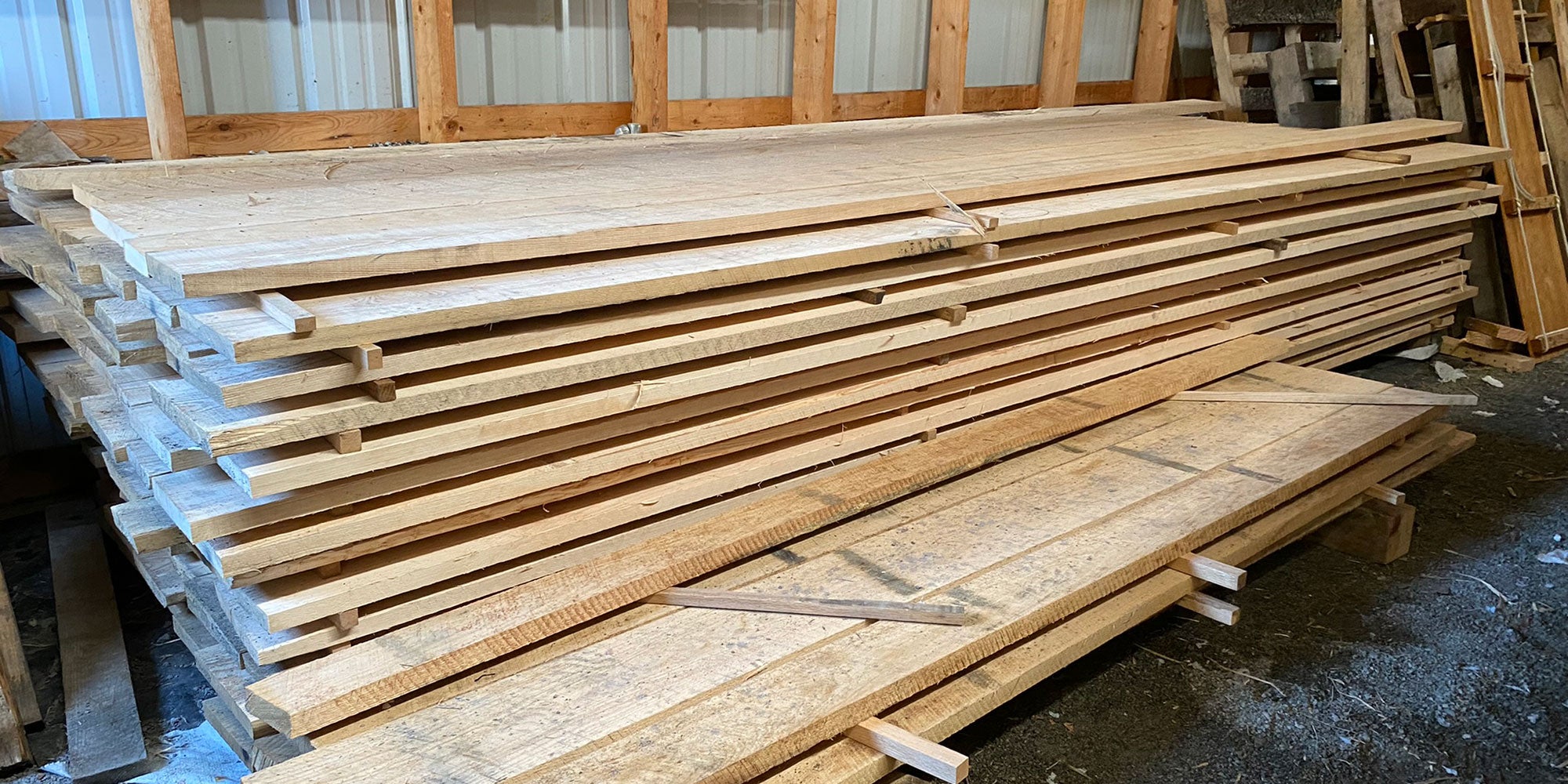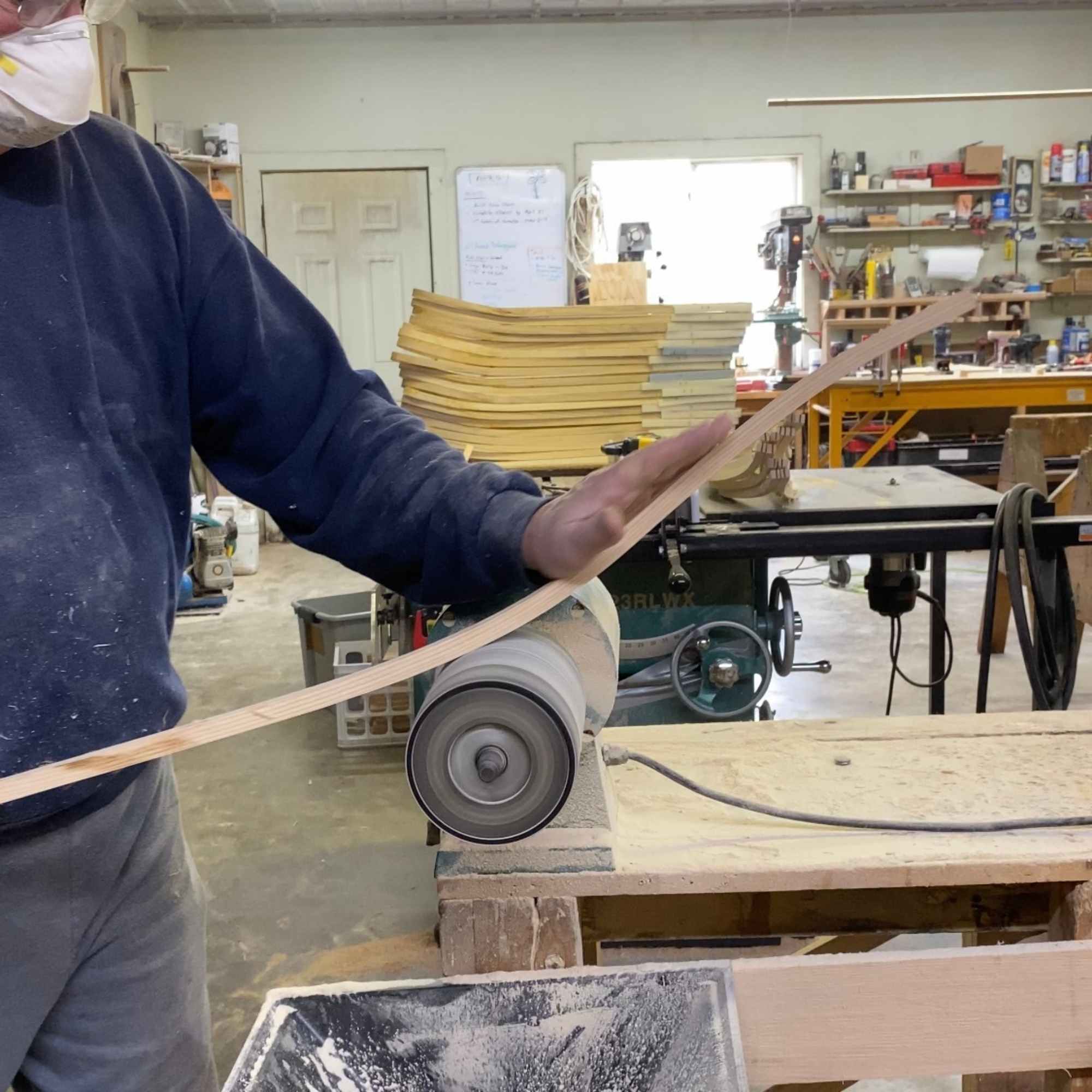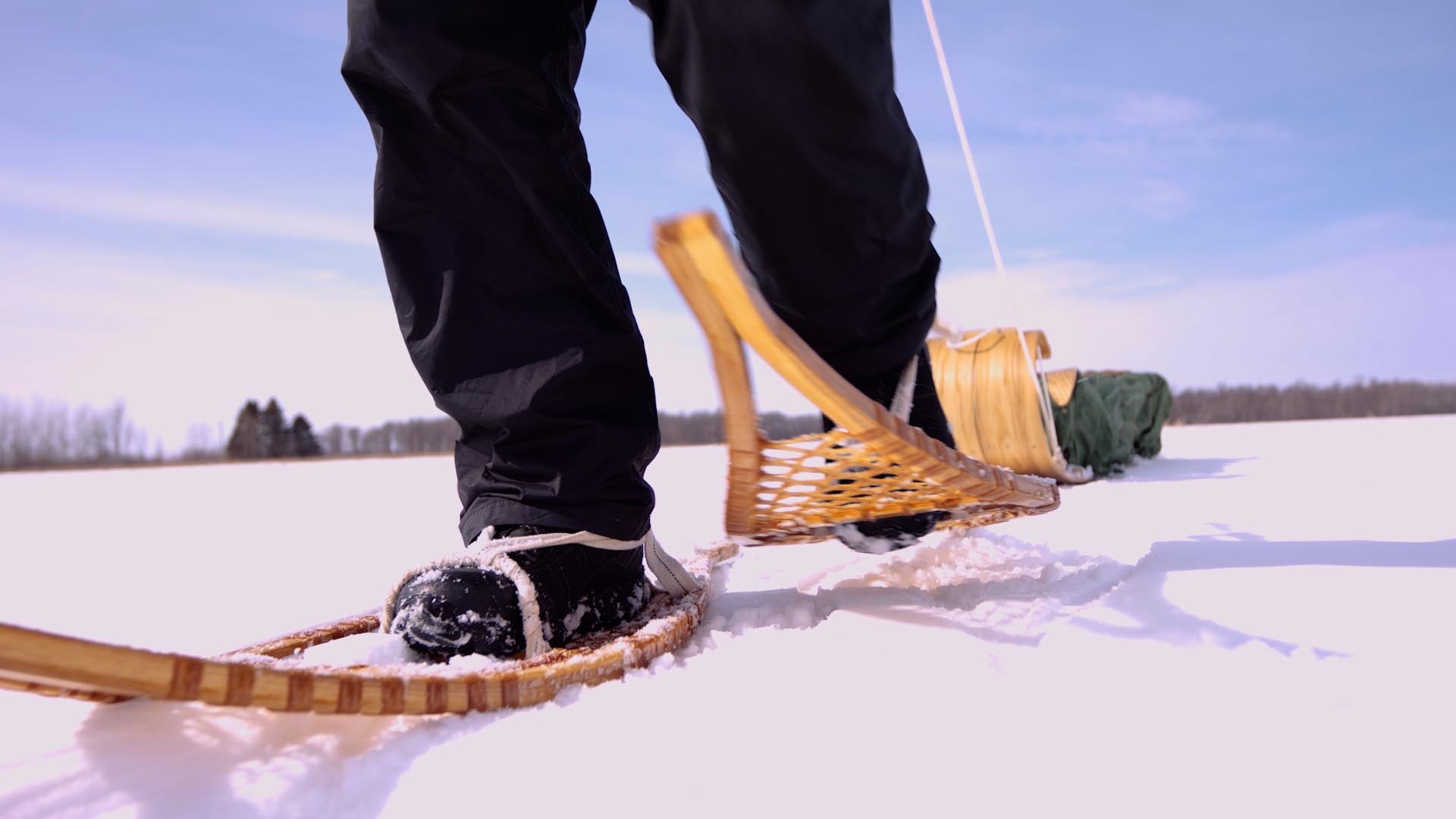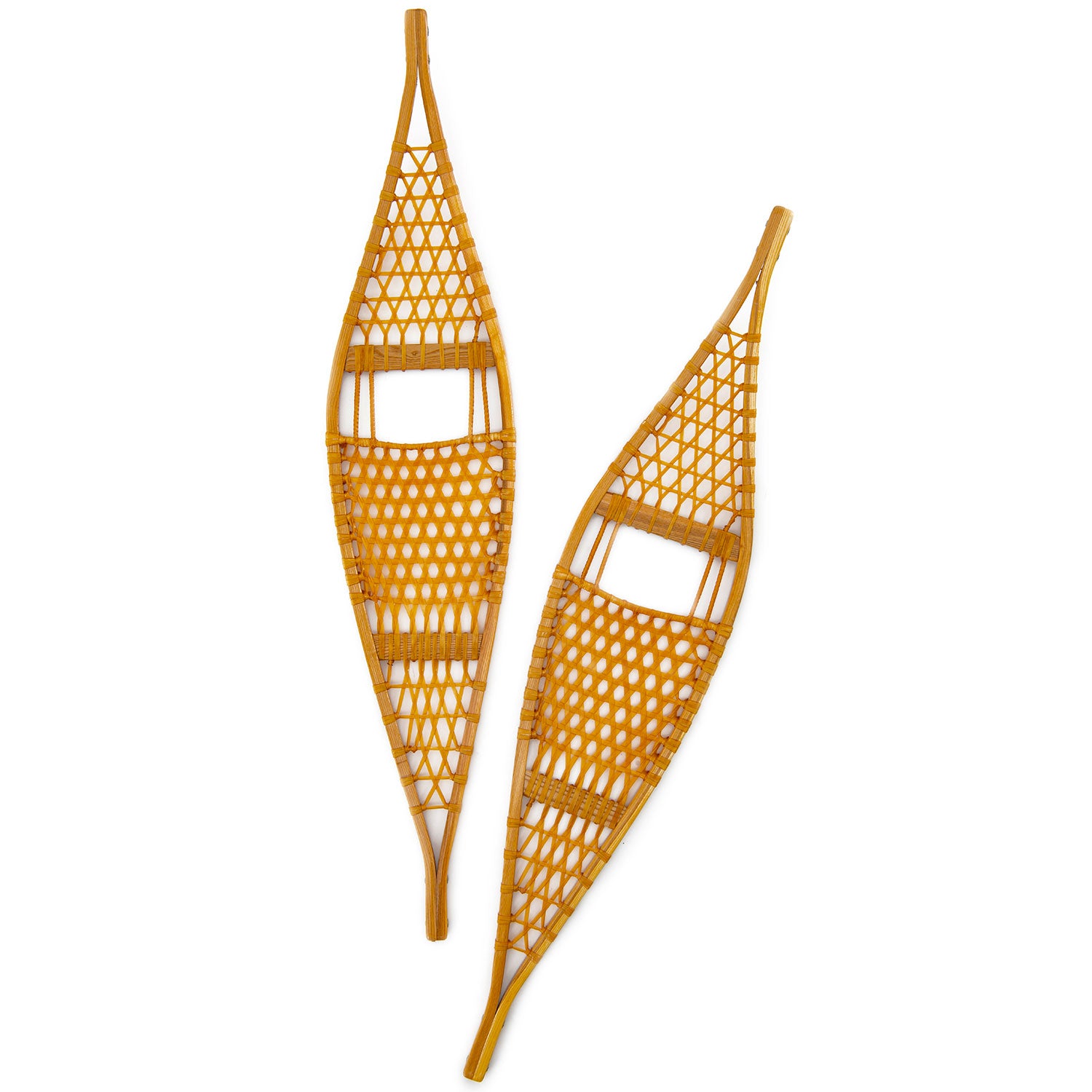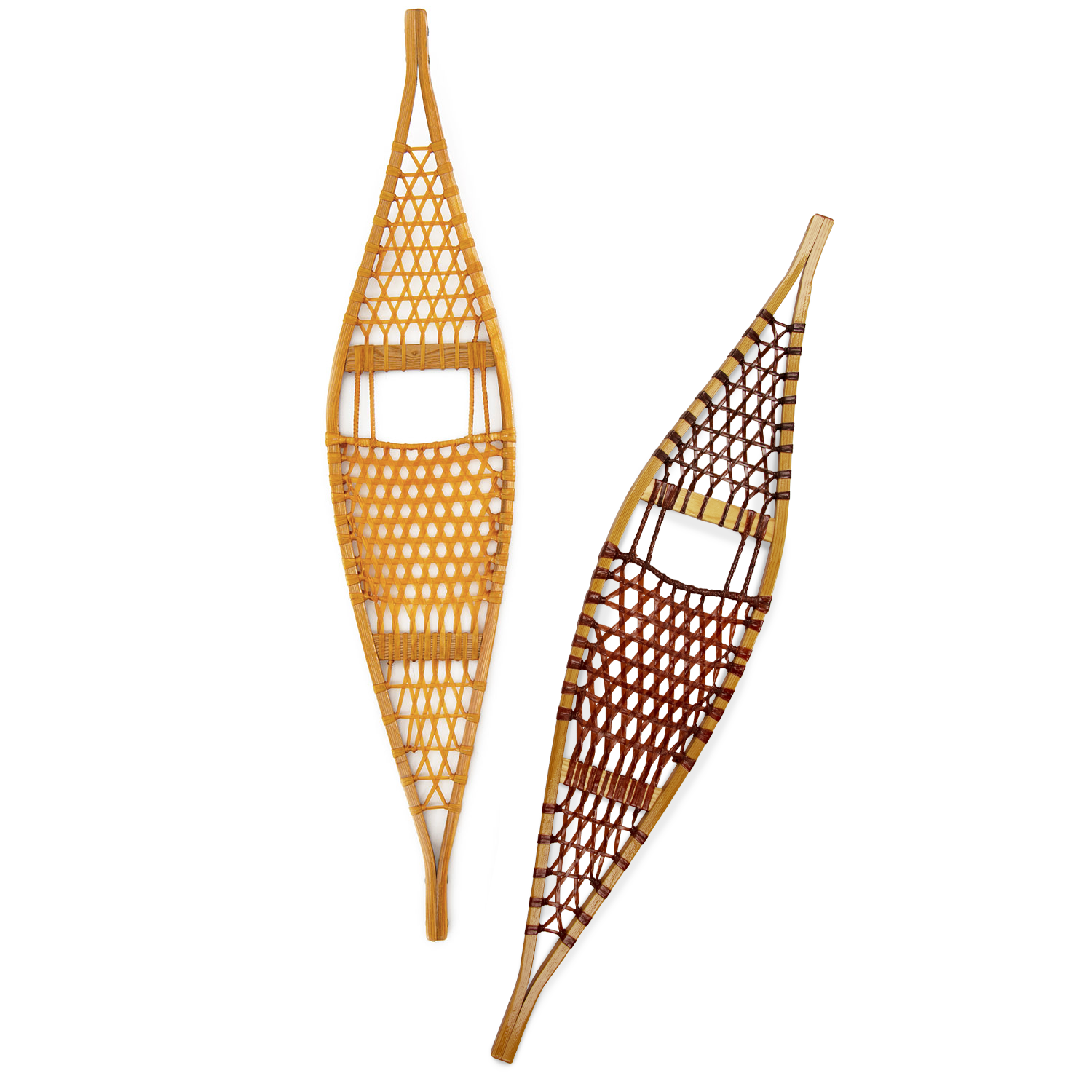
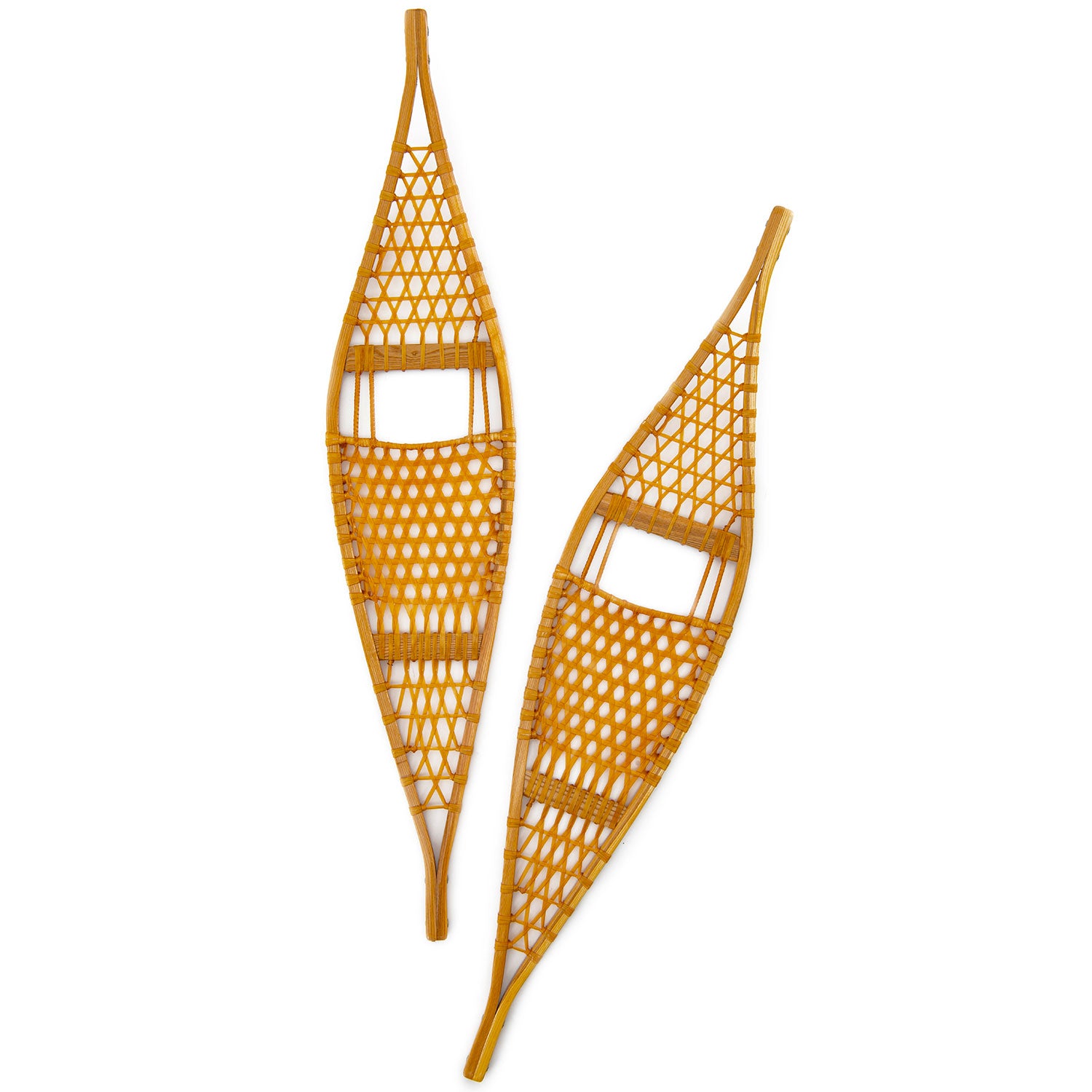

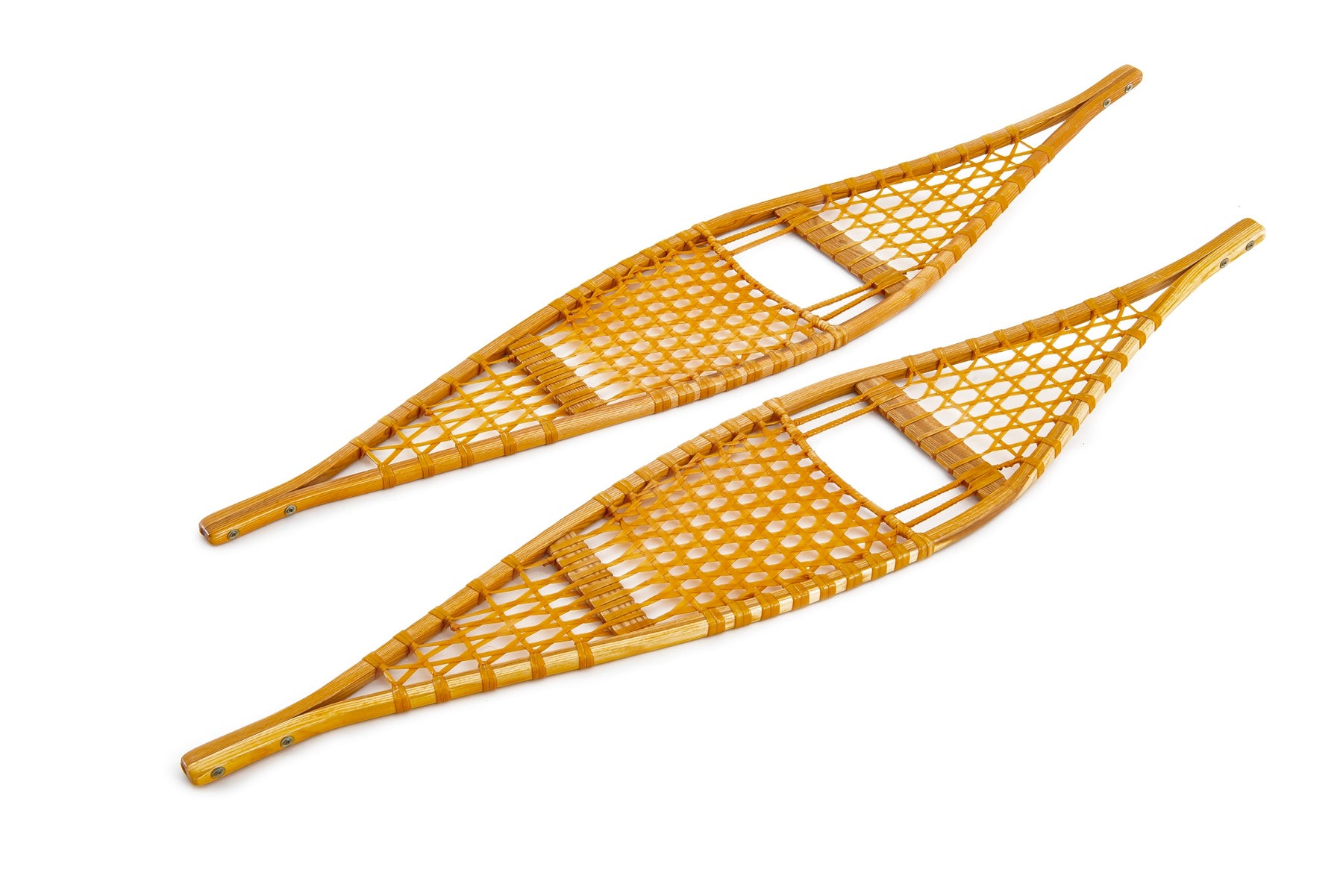
Northern Snowshoe
Ojibwa Finished Snowshoes
Shipping & Wholesale
Free domestic shipping on large products to all residents of the lower 48 states. Small products ship USPS for a flat $9 rate. International shipping has additional fees.
WholesaleInterested in wholesale opportunites? Contact Us!
Ojibwa Snowshoe Sizing
Roughly match snowshoe size to your body weight plus the weight of any pack.
As a rule, smaller shoes are easier to walk on. If close to a size break, choose larger shoes if you have long legs, wear a hefty pack, regularly break trail or have light, fluffy snow.
Choose smaller shoes for shorter legs, denser snow or packed trails (even if new snow covers the old tracks).
|
For Ojibwa Models
|
|||
|
Model
|
Dimensions
|
Age / Weight
|
Surface Floatation Area
|
|
YOUTH
|
9" x 36"
|
Age 6 to about 120#
|
320 Sq. in.
|
|
SMALL
|
10" x 48"
|
Age 8 to about 140#
|
510 sq. in.
|
|
MEDIUM
|
11" x 54"
|
130# to about 240#
|
645 sq. in.
|
|
LARGE
|
12" x 60"
|
6'tall and 210# and up
|
700 sq. in.
|
Choose options
Shipping & Wholesale
Free domestic shipping on large products to all residents of the lower 48 states. Small products ship USPS for a flat $9 rate. International shipping has additional fees.
WholesaleInterested in wholesale opportunites? Contact Us!
Shipping & Wholesale
Free domestic shipping on large products to all residents of the lower 48 states. Small products ship USPS for a flat $9 rate. International shipping has additional fees.
WholesaleInterested in wholesale opportunites? Contact Us!
Explore the Ojibwa Finished Snowshoes Features
